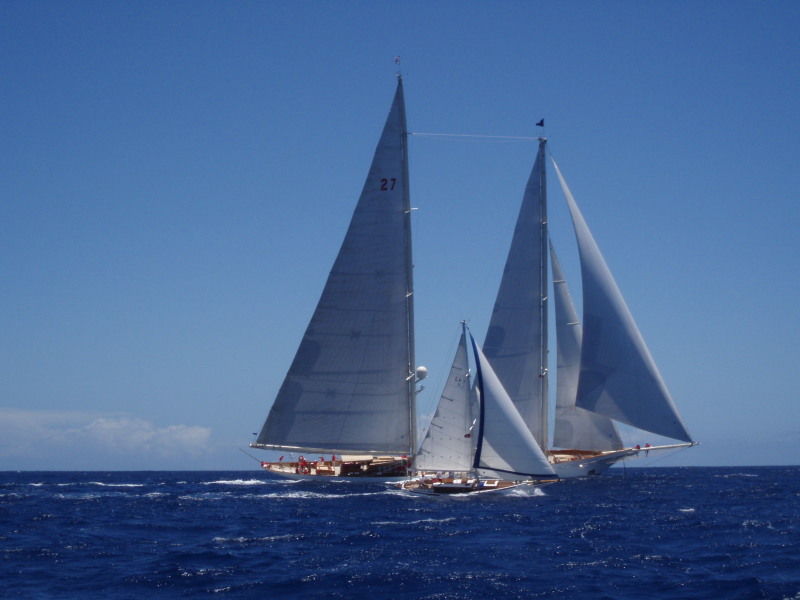No other problem has delayed the implementation of this project more than finding a suitable place in which to build the boat. When I first got the idea that this was something I wanted to do (over four years ago!) I initially had thought that construction would take place at my Dad's house in Maryland. At the time, that made sense to some degree, as there was plenty of space up there, as well as easy access to lots of tools, plus expertise from the family's resident boatbuilder extraordinare (for those of you who don't know him, Dad has done this before). Furthermore, I had little choice, as at the time I was renting a house whose topography, even in the extremely unlikely event that the landlord signed off on the project, would have turned the boat into an enormous 8-1/2 ton lawn ornament immediately upon completion. The place had a fully-fenced back yard immediately abutting a short and extremely steep hill in the front, with absolutely no hope of vehicular access whatsoever. That didn't stop it from serving as a boatyard of sorts -both my dinghy and kayak were finished there- but moving them into and out of the place was difficult at the best of times.
Dad's place had some disadvantages, however, particularly distance. It takes about an hour to get there if there's no traffic (a rarity on the DC beltway), which makes weeknight visits impractical. The distance also manifests itself in the cost of fuel to get there and back, and by making it more difficult to change plans on a whim. One finds oneself spending entire weekends there in the interest of getting the most work out of the fewest number of trips, at the expense of friends, other activities, etc. I tried to tell myself that that would be no big deal - that I could easily work on smaller sections of the project at my place, then trailer them up to the farm for final assembly, but the fact remained that a very large amount of time would have had to have been spent up there - particularly in the later stages of the project. In hindsight, I'm surprised that I held onto that notion as long as I did. Even after purchasing my current house in the fall of 2011, I spent six months designing a garage to fit at the end of the driveway, wherein, I was certain, patterns could be picked up and pieces shaped for eventual assembly elsewhere.
 |
| Concept drawing of one of three lean-to sheds under which tools and timber will be stored. |
I don't remember there being any single moment when it "clicked" that this was not the best way to proceed; it was more of a gradual realization that took place throughout the summer of 2012. As I continued to work on lofting the boat's lines on my back deck, I came to appreciate the amount of progress that could be completed on weekday evenings, as long as the work site was located yards -instead of tens of miles- from my kitchen. Once I'd had that epiphany, however, I sprung into action. First, I inquired with the neighbors, who were all just fine with the idea. Next I called the county, asking whether there were any regulations pertaining to backyard boatbuilding. I could tell right away that this was not the kind of question they were used to fielding. After being put on hold for a while, and having my request escalated through what felt like several levels of supervisory responsibility, I finally was able to speak with someone who let me know that while there were no specific regulations prohibiting such a project, there were ordinances pertaining to the outdoor storage of construction materials that I should bear in mind. Given the amount of effort I intended to put into the project, I asked if I could have that in writing. To my surprise, they said that that would be no problem, as long as I e-mailed them with a formal request.
"Oh and by the way," my kindly local government official asked me over the phone, "about how big is this boat going to be?"
I gulped silently.
"Picture it like a big RV." I replied, sure I'd completely screwed myself. Two weeks later, however, I had a letter from the Zoning department granting my project explicit permission to go ahead. In its final sentence, the letter emphasized that while the county has no problem with boatbuilding, my HOA would probably have something to say about it. I smiled gleefully at this: I don't have one.
Following my positive encounter with the county, I built three small lean-tos (concept and construction pictured above) under which I intend to store timber and tools during the build. I'm also considering knocking together a couple of large rectangular wooden boxes in which to plant some bamboo, to screen the project so that it can't be seen from the sidewalk. Finally, I've contacted a professional boat-moving company, and asked them to assess the suitability of the site from a transport perspective. In hindsight, I probably should have done that before I built the lean-tos, but...well...I didn't. I haven't heard back from them yet, but I'll post about it when I do. In the meantime, here's a sample of the type of terrain they'll have to deal with:




